Project Depiction and Setting
- Case study: Nursing and rehab centre.
- Scope description: A for-profit agency (part of a chain of nursing homes in different states).
- Location: Roswell, Georgia.
- Size: The agency has 220 beds with 33 ventilator beds.
- Occupancy rate: 68 percent with 181 residents.
- Service description: Providing general skilled nursing services to patients on-site and offsite.
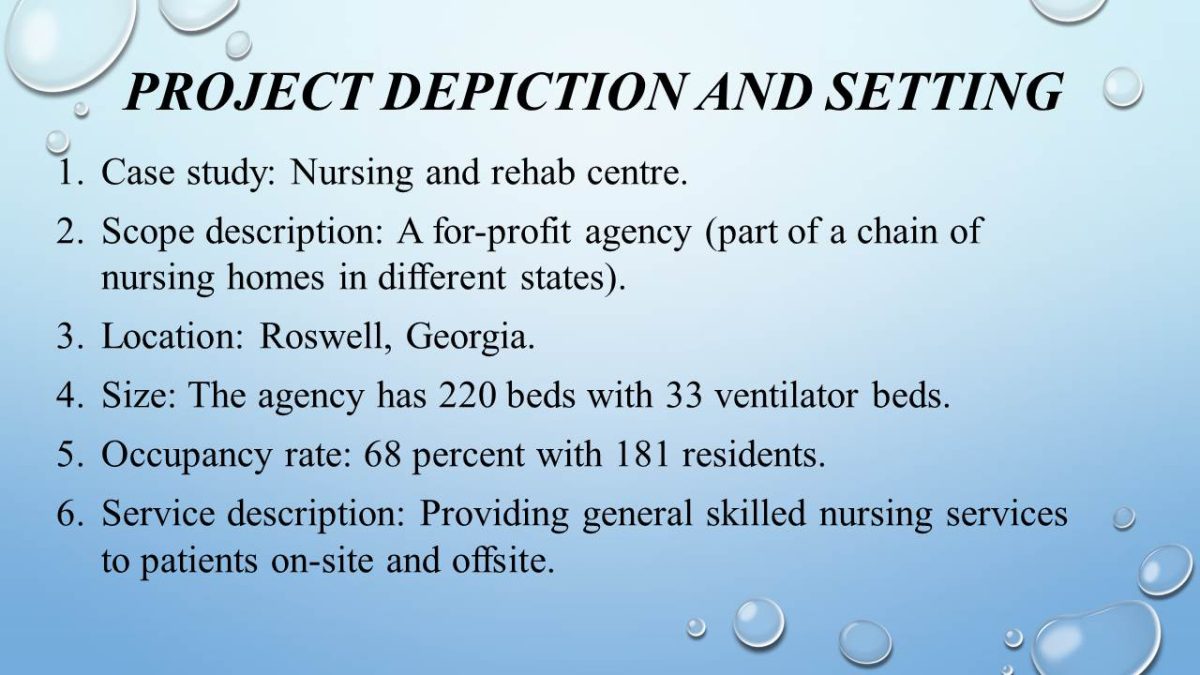
Purpose of the Research Study (Re-hospitalization)
To analyse:
- Causes of re-hospitalization.
- Availability and quality of post-acute care.
- Effects of re-hospitalization (e.g. Functional status or disability) (Berkowitz et al., 2011).
- Ways of enhancing patients’ care and effective transitions of patients.
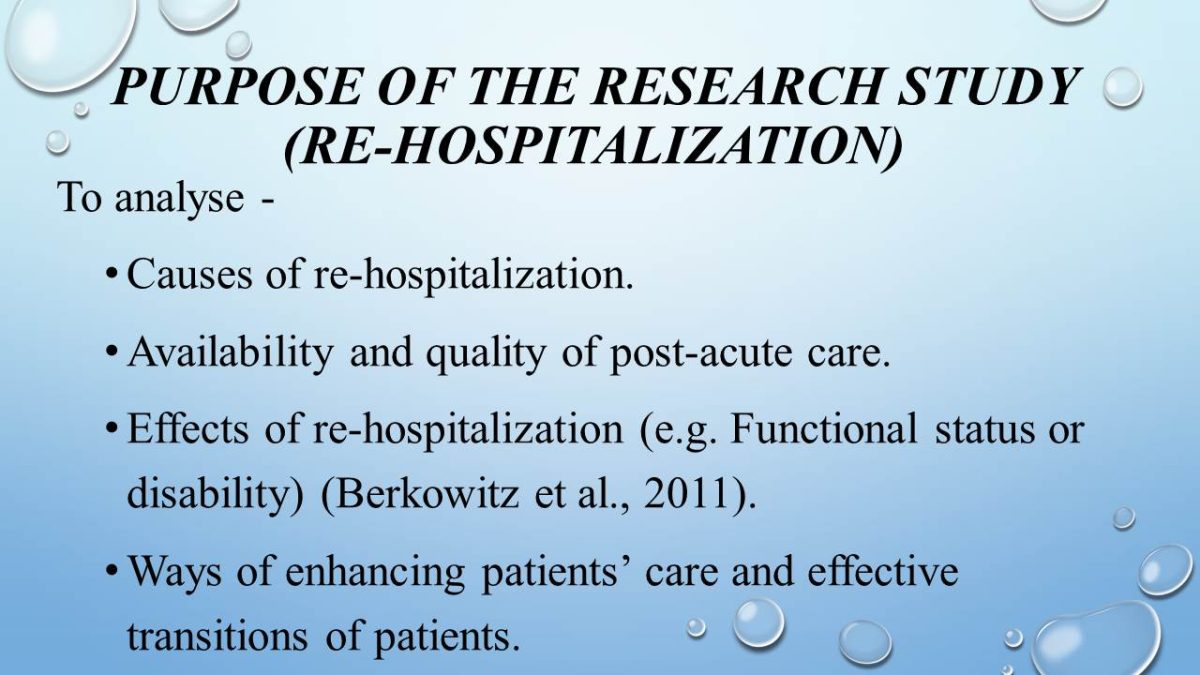
Design of the Educational Project
- Presentation through pamphlets.
- Class lectures to facilitate understanding.
- Facilitating active participation at all stages.
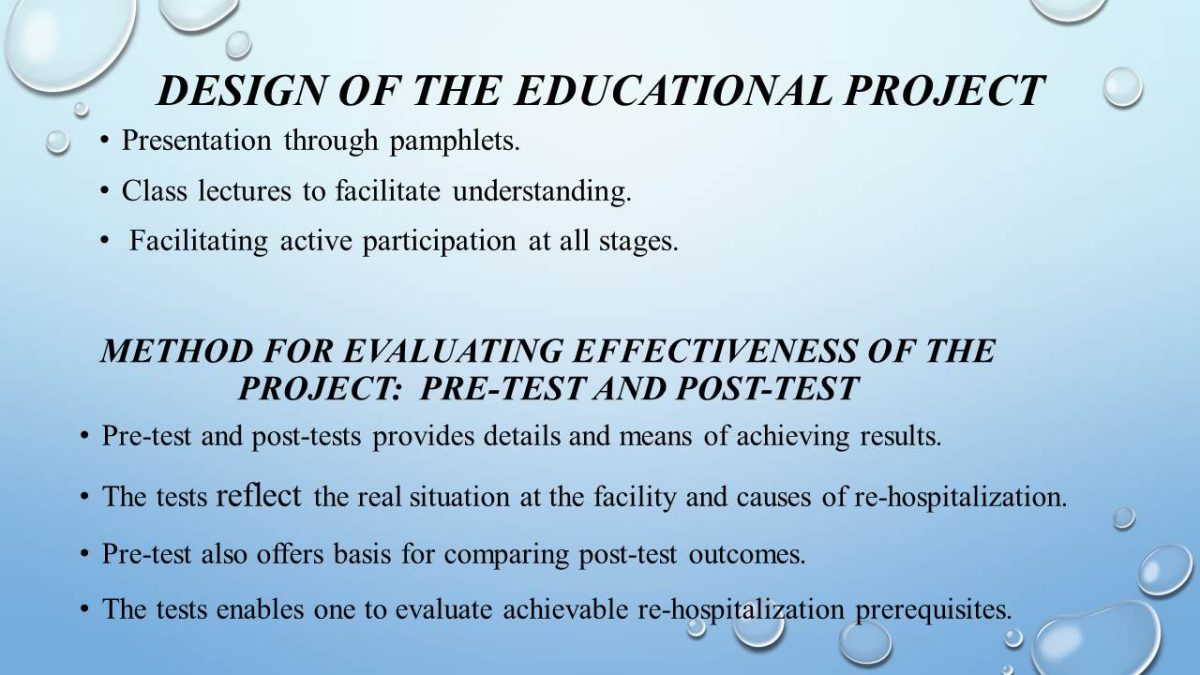
The Model for Project Effectiveness Evaluation
Pre-test (true or false):
- It is possible to reduce cases of re-hospitalization after 30 days of patients’ discharge.
- Re-hospitalization is preventable.
- Re-hospitalization has negative impacts on patients and healthcare providers.
- We should observe discharge disposition and reassess patients’ data before discharge.
Post-test (true or false):
- Re-hospitalization is preventable;
- There are many risk factors correlating to future hospital readmission;
- Care providers have the ultimate roles in minimizing cases of hospital readmission.
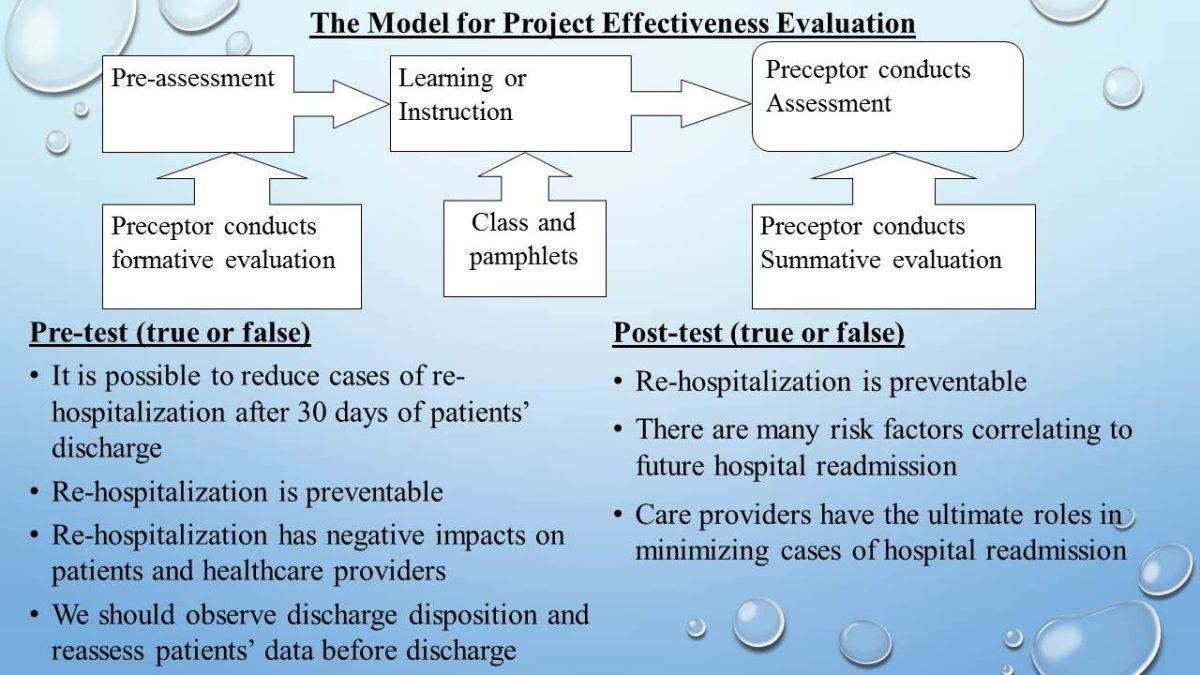
Literature Review
- Cost of re-hospitalization was $4.34 billion in 2006 and most of the patients were Medicare beneficiaries (Mor et al 2010).
- In October 2012, Medicare policymakers withdrew payments for preventable cases of re-hospitalization, which involve pneumonia and heart failure and also promised to review other medical conditions within two years (Mor et al 2010).
- Patients discharged to Skilled Nursing Facilities (SNF) have high rates of “early and unplanned re-hospitalization” (Berkowitz et al., 2011).
- Risks involving hospital readmission include congestive heart failure, acute medical illnesses, and depression (Berkowitz et al., 2011).
- Senior patients suffer from a steady reduction of functional abilities and increases dependence on long-term care at healthcare facilities.
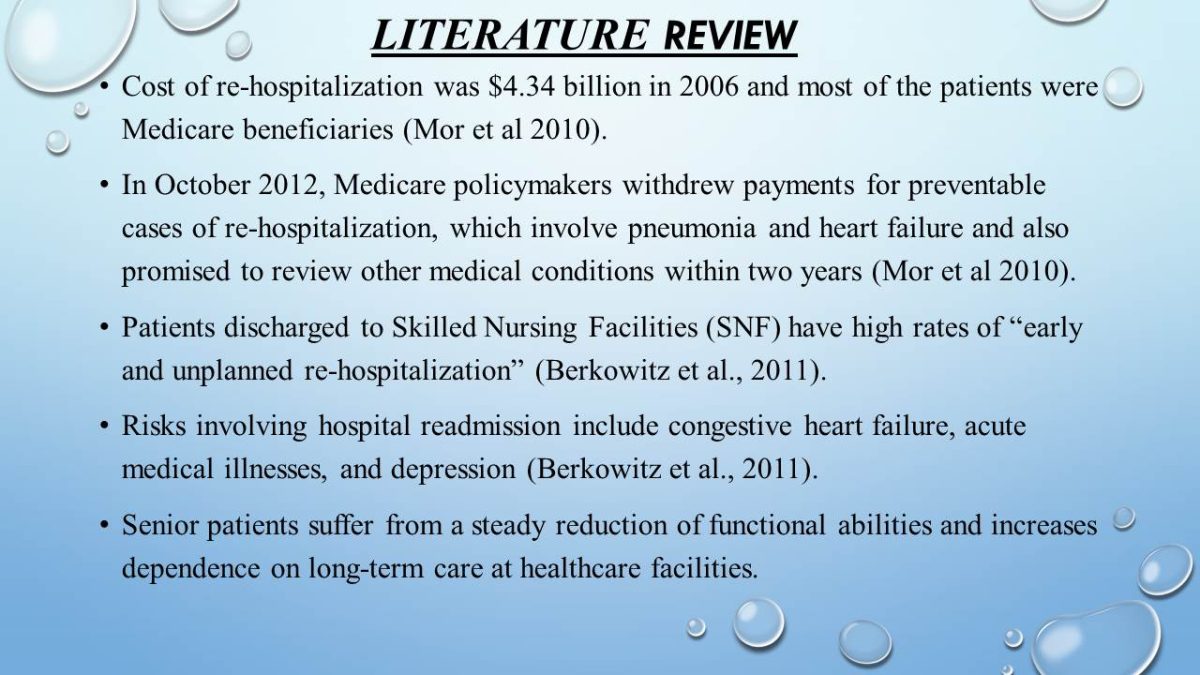
Classes of re-hospitalization; avoidable and unavoidable cases (Sedehi, 2011)
Causes of avoidable re-hospitalization
- Lack of follow-up care after discharge;
- Medical errors;
- Severe events;
- Lack of appropriate social support;
- Clinical demographics;
- Operational factors such as long/short stays due to wrong admission/discharge time (Sedehi, 2011).
- Lack of sufficient data (Kudtarkar, 2009).
- Poor coordination among various healthcare providers (Kudtarkar, 2009).
- Costs; government’s action to alter payments as a quality improvement initiative (Hansen et al., 2011).
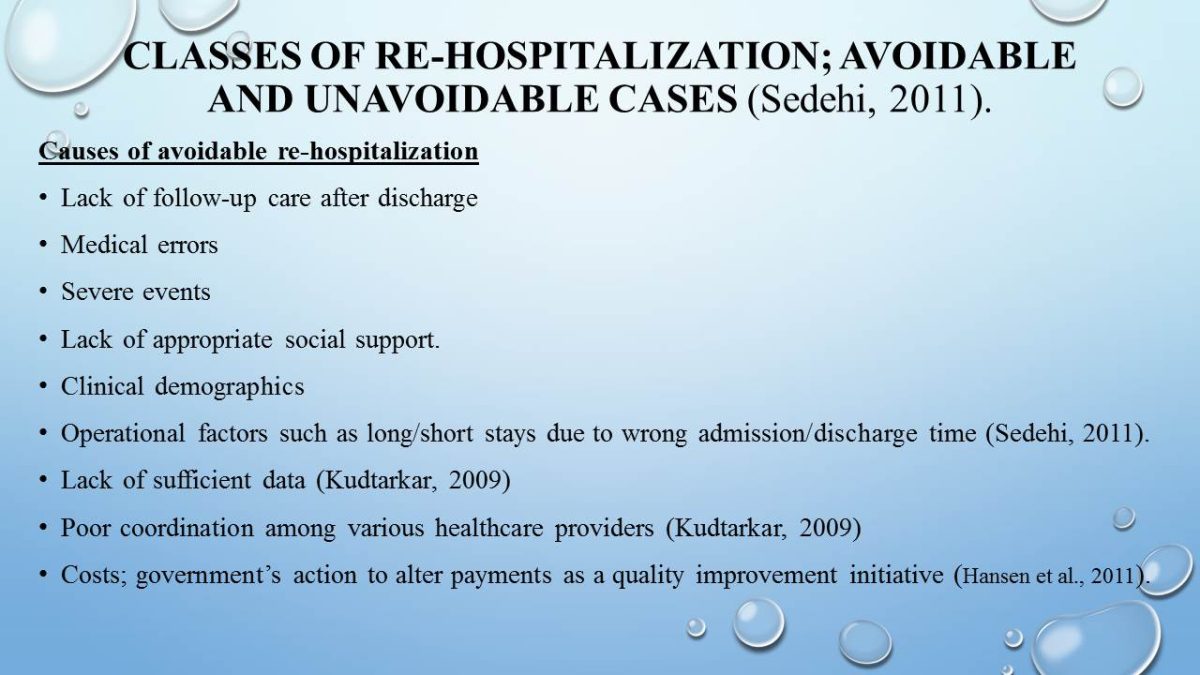
General trends observed in re-hospitalization of patients to both SNF and other rehabilitation centres
Other Possible Causes of Re-Hospitalization
Avoidable cases of rehospitalisation in the US also depend on “a variety of patient populations, geographical locations, healthcare settings, study designs, clinical and theoretical perspectives, and conditions” (Vest, et al., 2010).
Studying the variation of rehospitalisation literature depends on:
- Definition differences;
- Geographical gaps;
- Methodological and study designs.
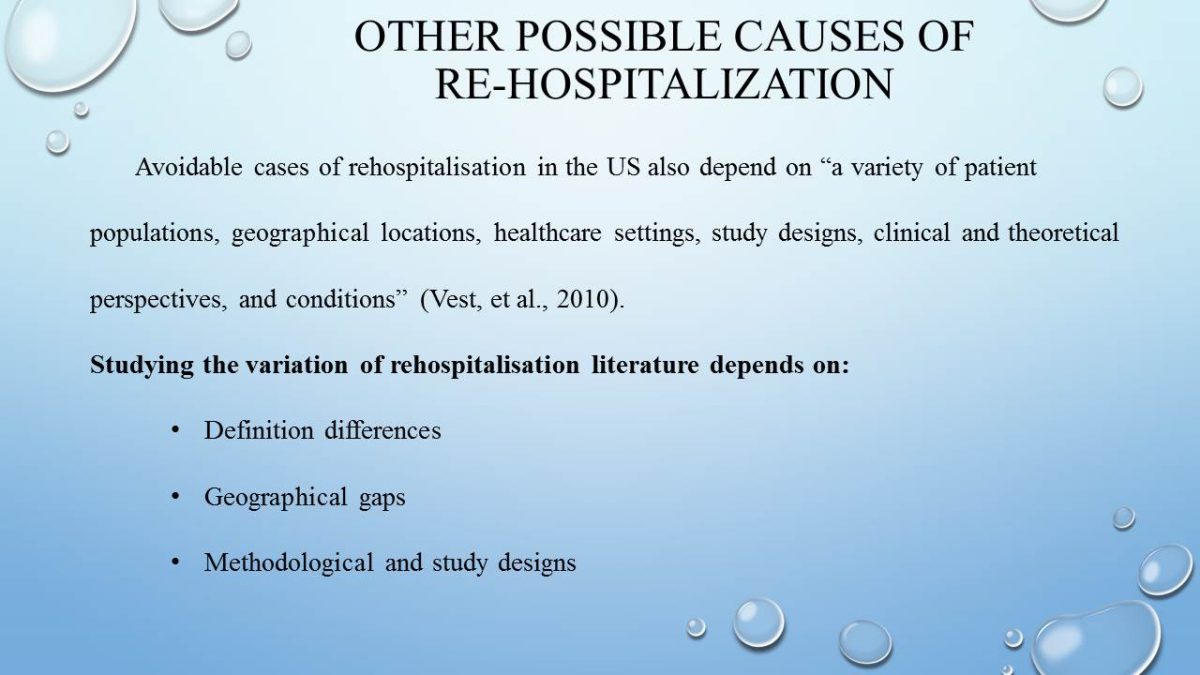
Proposed ways of reducing cases of re-hospitalization
- Proper documentation systems and effective discharge planning.
- Adequate discharging processes.
- Comprehensive intervention plan for admission, care/social services provision, medication reconciliation, re-hospitalization. frequencies and patient’s preferences (Berkowitz et al., 2011).
- Two-tier model; care provider identifies a high-risk patient and refers the patient to an educator in order to enhance discharge processes and ensure adherence after the discharge (Sedehi, 2011).
- Effective constant follow-ups after discharge through volunteerism. (Sedehi, 2011).
- Patient’s pre-discharge education and counselling.
- Outlining potential cases of re-hospitalization and avoidable cases of readmission.
- Establishing effective home-based support services.
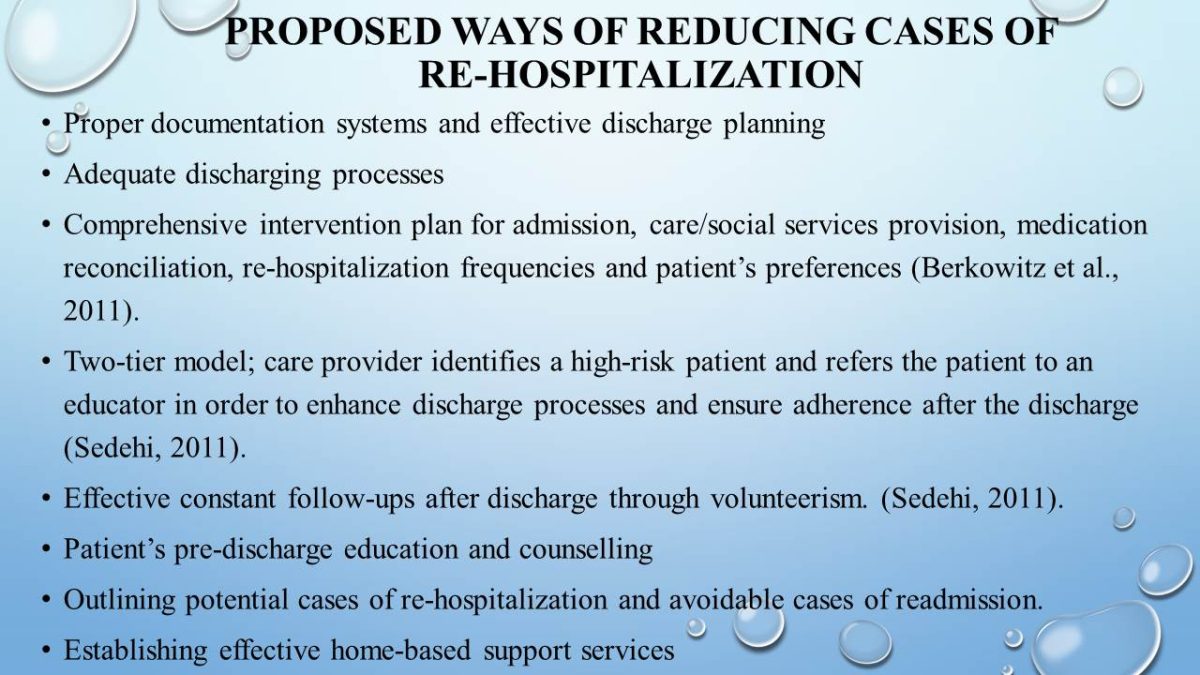
Project Implementation and Evaluation of Effectiveness
- Stage 1: Review of goals for realism and measurability (Class lectures accompanied by pamphlets).
- Stage 2: Determining progress based on adherence to objectives and project requirements.
Data collection:
- Stage 3: Use goals and measures to identify effective interventions. (Analysis of collected data).
- Stage 4: Reinforce (revise or eliminate) interventions with positive outcomes on learners.
Anticipated/achieved short and long-term outcomes
- Increased awareness about re-hospitalization.
- Active participation and positive results by the target group.
- Identification of various causes and circumstances leading to re-hospitalization.
- Understanding importance of care providers in reducing cases of re-hospitalization.
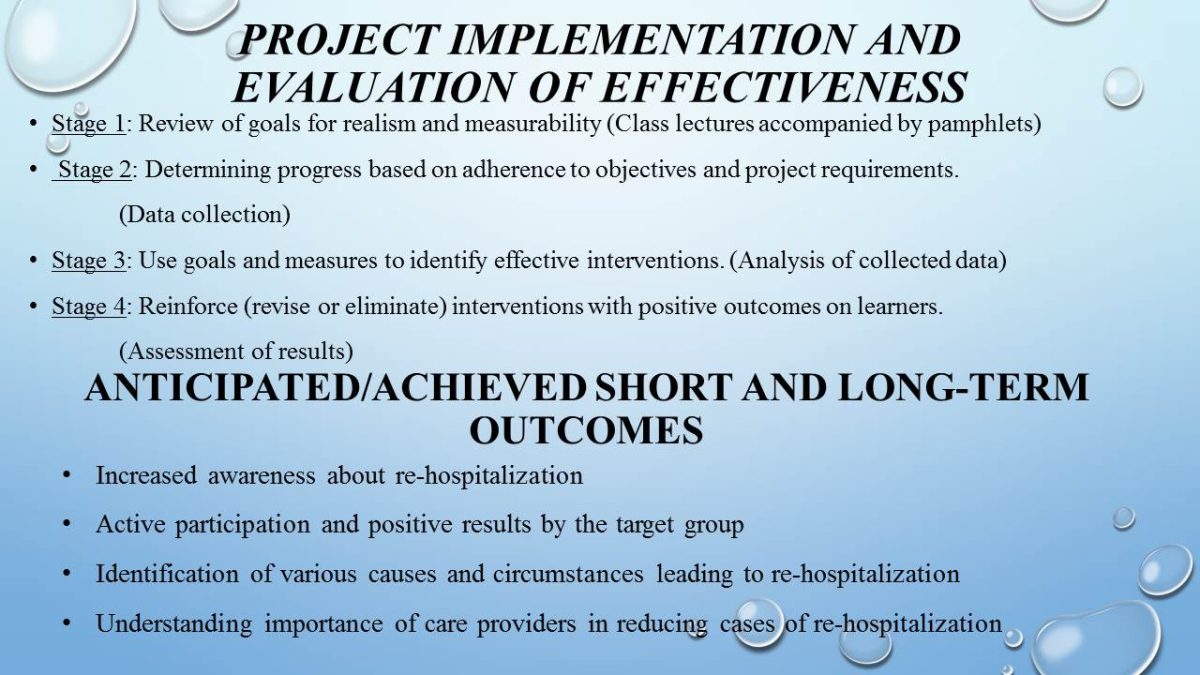
Conclusion: Concerns over re-hospitalization
- Re-hospitalization results from inadequate preparation of patients for discharge; poor follow up by the healthcare providers and non-compliance by the patient.
- Re-hospitalization leads to increased health complications, unnecessary healthcare costs and reimbursement claims.
- Initiatives on re-hospitalization at schools or learning centers have positive outcomes.
- There is need to explore different strategies to enhance awareness.
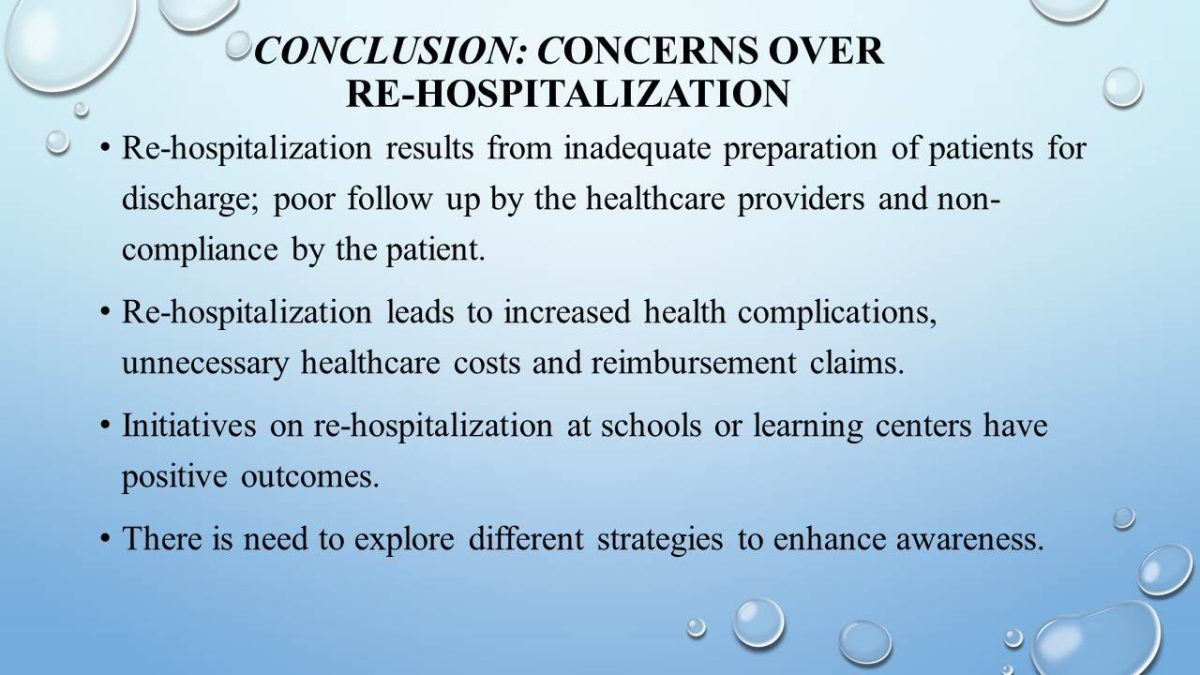
References
Berkowitz, R., Jones, R., Rieder, R., Bryan, M., Schreiber, R., Verney, S., & Paasche-Orlow M. (2011). Improving Disposition Outcomes for Patients in a Geriatric Skilled Nursing Facility. Journal of the American Geriatrics Society, 59(6), 1130-6.
Hansen, L, Strater, A, Smith, L., Lee, J, Press, R, Ward, N.Williams, M. (2011). Hospital discharge documentation and risk of rehospitalisation. BMJQualSaf. 2011, 1-7.
Kudtarkar, D. (2009). Discharge planning: Exploring strategies to increase social involvement. Healthcare Environments of the Future, COA 8823-DZ, 1-4.
Mor, V., Intrator, O., Feng, Z., and Grabowski, D. (2010). The Revolving Door of Rehospitalization From Skilled Nursing Facilities. Health Aff (Millwood), 29(1), 57–64.
Sedehi, A. (2011). Addressing the Problem of Hospital Readmissions. Web.
Vest, J., Gamm, L., Oxford, B., Gonzalez, M., and Slawson, K. (2010). Determinants of preventable readmissions in the United States: a systematic review. ImplementSci., 5, 88.